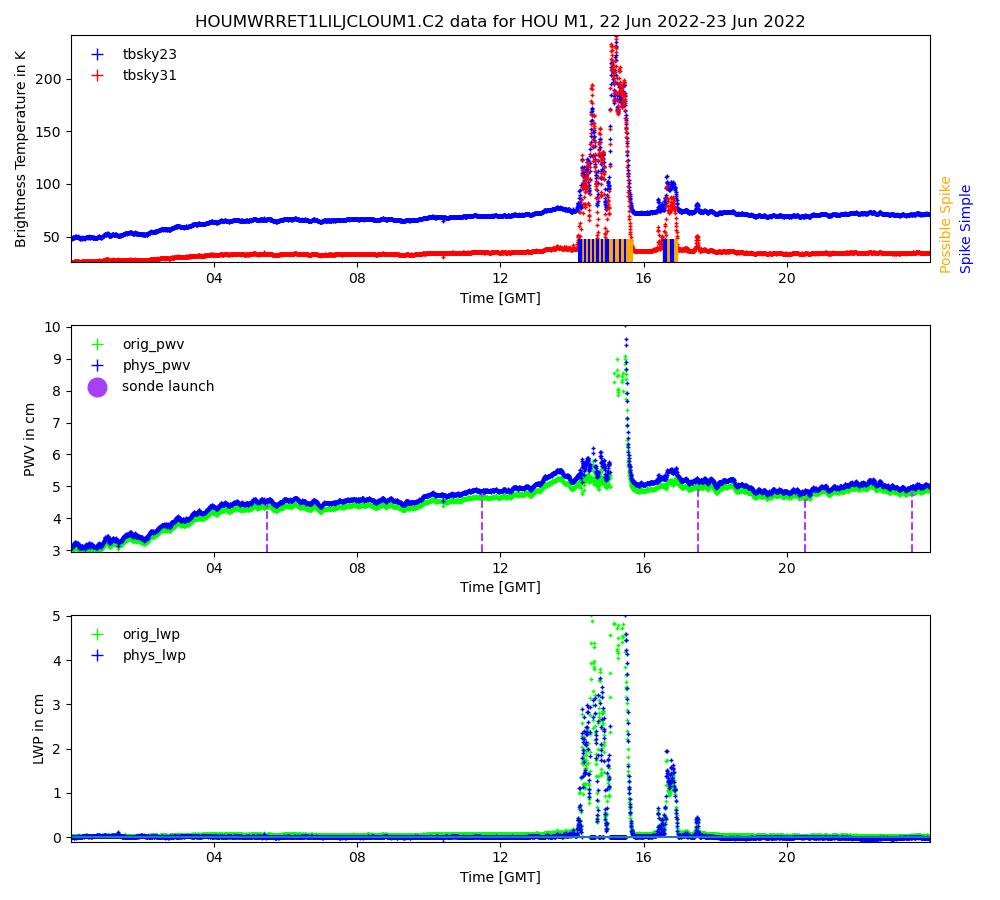New Microwave Radiometer Retrieval Data Now Available
Published: 25 September 2023

New level 2 (c2) files are now available from the Microwave Radiometer Retrievals value-added product (MWRRET VAP). This release covers the 2021–2022 TRacking Aerosol Convection interactions ExpeRiment (TRACER) near Houston, Texas, and all of 2022 at ARM’s North Slope of Alaska atmospheric observatory.
MWRRET retrieves column precipitable water vapor and liquid water path—both important variables to understanding radiative transfer in the atmosphere and clouds—from ARM’s 2-channel microwave radiometers (23.8 and 31.4 GHz). The VAP uses a physical retrieval methodology that provides improved retrievals over the standard statistical coefficient method.
MWRRET has two stages of processing data from ARM’s fixed-location observatories. In the first stage, the VAP is run in near-real time to produce timely operational .c1-level files. The second stage of processing, which produces .c2-level files, is run yearly. During this stage, improved offsets are applied to the 23.8 GHz channel, improving the precipitable water vapor retrievals. In addition, this stage uses cloud vertical extent information from the Active Remote Sensing of CLouds (ARSCL) VAP rather than ceilometer data to get the correct temperature of the liquid water layers in the atmosphere.
For the TRACER mobile facility deployment, MWRRET ran at the end of the campaign, and data were immediately processed as c2.
When available, .c2-level files should be used because they are expected to be the most accurate.
More information on MWRRET can be found on the VAP web page. Feedback on the VAP can be sent to ARM translator Damao Zhang.
Access these data in the ARM Data Center. (To download the data, create an ARM account.)
To cite the MWRRET data, please use doi:10.5439/1027369.
Keep up with the Atmospheric Observer
Updates on ARM news, events, and opportunities delivered to your inbox
ARM User Profile
ARM welcomes users from all institutions and nations. A free ARM user account is needed to access ARM data.


















